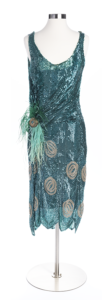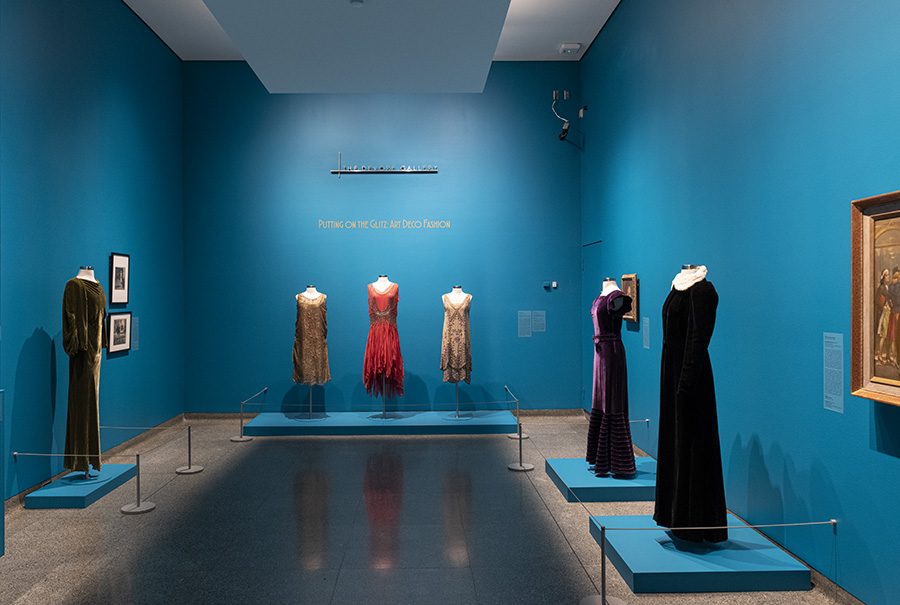As the Art Deco era dawned in the early 1920s, life had changed dramatically for American women. They were entering the workforce in increasing numbers, had gained the right to vote, and had more opportunities for education. The bicycle, and then the car, allowed this new “modern woman” freedom to leave her home without male escort and socialize at nightclubs and speakeasies.
In this new world, she also wore a new type of dress—one inspired by Art Deco’s blocky geometries. In the 1920s, fashionable women wore dresses with dropped waists and calf-length hems, often made of satin or covered in beadwork to exploit Art Deco’s fascination with light and sheen. In the 1930s—as longer gowns came back in style—women’s fashion often combined simple, fluid construction with geometric patterns to create streamlined looks reminiscent of Art Deco architecture and industrial design.
Drawn from the Wichita Art Museum and Wichita-Sedgwick County Historical Museum permanent collections, Putting on the Glitz combines Art Deco-era clothing and accessories with prints and paintings of fashionable women on the town by artists such as John Sloan, Martin Lewis, and Reginald Marsh.
Putting on the Glitz is organized in conjunction with American Art Deco: Designing for the People, 1918–1939.

